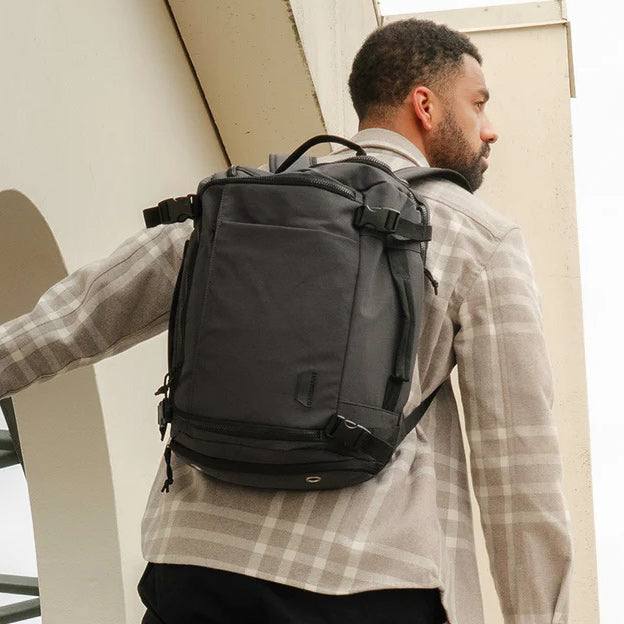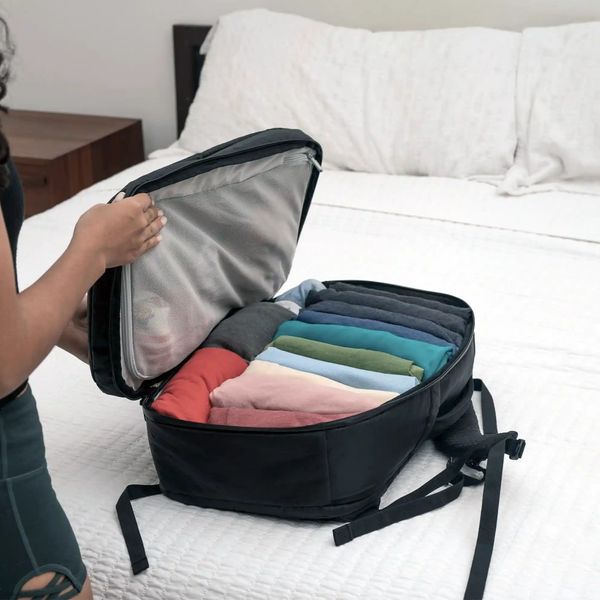Why Choose a Carry-On Travel Backpack?
In an era of increasing airline baggage fees and the desire for streamlined travel, the carry-on travel backpack has emerged as the savvy traveler’s preferred companion. Unlike traditional rolling luggage, a well-designed travel backpack offers unparalleled freedom and flexibility. Imagine navigating crowded airports, cobblestone streets, or hopping on and off public transport with ease – all while keeping your essentials securely on your back. Beyond convenience, opting for a carry-on eliminates the anxiety of lost or delayed checked baggage, saving you valuable time and potential headaches.
Mobility and Convenience: Effortlessly navigate diverse terrains and crowded spaces.
Cost Savings: Avoid often hefty checked baggage fees.
Time Efficiency: Skip the baggage claim carousel and head straight to your destination.
Security and Peace of Mind: Keep your valuables close and minimize the risk of loss.
Key Features to Consider in a Carry-On Backpack
Selecting the right carry-on backpack involves careful consideration of several crucial features. Not all backpacks are created equal, and understanding these elements will empower you to make an informed decision that aligns with your travel style and needs.
Size and Capacity: Maximizing Your Allowance
Airline regulations regarding carry-on size can vary significantly. Therefore, it’s paramount to choose a backpack that adheres to the most common dimensions (typically around 22 x 14 x 9 inches or 55 x 35 x 23 cm). Capacity is usually measured in liters, and a range of 30-45 liters often strikes the perfect balance between ample storage and compliance with carry-on restrictions. Look for backpacks that maximize internal space while maintaining a compact external profile.
Comfort and Ergonomics: For Journeys Long and Short
Even if you’re not trekking through the wilderness, a comfortable travel backpack is essential for navigating airports and transit hubs. Key ergonomic features include:
Padded Shoulder Straps: Wide and well-padded straps distribute weight evenly, reducing strain on your shoulders.
Adjustable Sternum Strap: This strap connects the shoulder straps across your chest, further improving weight distribution and stability.
Load-Bearing Hip Belt: A robust hip belt transfers a significant portion of the backpack’s weight to your hips, the strongest muscles in your body.
Ventilated Back Panel: Mesh or airflow channels on the back panel help to prevent excessive sweating and improve comfort, especially in warmer climates.
Internal Frame or Back Support: Some backpacks feature an internal frame or structured back panel for added support and to maintain the backpack’s shape.
Organization and Accessibility: Packing Smart, Not Hard
A well-organized carry-on backpack can make all the difference in your travel experience. Look for features that facilitate efficient packing and easy access to your belongings:
Clamshell Opening: This suitcase-style opening allows you to lay the backpack flat and easily access all your items without having to dig through layers.
Multiple Compartments: Separate compartments for clothing, shoes, electronics, and toiletries help to keep everything organized and prevent items from shifting during transit.
Laptop Sleeve: A dedicated, padded laptop sleeve with secure closure is crucial for protecting your valuable tech. Ensure it’s easily accessible for airport security checks.
Water Bottle Pockets: External stretch-mesh pockets are essential for staying hydrated on the go.
Small Accessory Pockets: Zippered pockets on the front, top, or sides are perfect for storing smaller items like passports, phone chargers, and travel documents.
Compression Straps: Internal and external compression straps help to cinch down your belongings, reduce bulk, and prevent items from moving around.
Durability and Materials: Built to Last
A quality carry-on travel backpack should be able to withstand the rigors of travel. Look for backpacks made from durable and water-resistant materials such as:
Nylon (e.g., Cordura, Ballistic Nylon): Known for its strength, abrasion resistance, and relatively light weight. Higher denier numbers (e.g., 900D, 1050D) indicate greater durability.
Polyester: A more budget-friendly option that still offers good durability and water resistance.
Water-Resistant Coatings (e.g., DWR): A durable water repellent finish helps to shed light rain and moisture. Consider backpacks with included rain covers for heavier downpours.
Strong Zippers (e.g., YKK): High-quality zippers are less likely to break or snag, ensuring the longevity of your backpack.
Reinforced Stitching: Pay attention to stress points such as seams and handles, ensuring they are reinforced for added durability.
Security Features: Protecting Your Valuables
In crowded areas, security is a paramount concern. Consider backpacks with features that help to deter theft:
Lockable Zippers: Zipper pulls that can be clipped together with a small padlock can help to prevent opportunistic theft.
Hidden Pockets: Discreet pockets located on the back panel or inside the backpack are ideal for storing valuable items like passports and wallets.
Slash-Resistant Materials: Some high-end travel backpacks incorporate slash-resistant fabrics and wiring for enhanced security.
Style and Aesthetics: Travel in Your Own Way
While functionality is key, the style of your carry-on backpack is also a personal consideration. Backpacks come in a wide range of colors, designs, and silhouettes. Choose one that reflects your personal style and makes you feel confident on your travels.
Top Considerations Before You Buy
Before you finalize your purchase, take a moment to consider these important factors:
Your Typical Trip Length and Style: Are you a minimalist traveler on short weekend trips or someone who needs more gear for longer adventures?
Airline Compatibility: Always check the specific carry-on size restrictions of the airlines you fly most frequently.
Budget: Carry-on travel backpacks range in price from budget-friendly options to premium, feature-rich models. Determine your budget and research options within that range.
Reviews and Recommendations: Read reviews from other travelers to gain insights into the real-world performance and durability of different backpacks.
Try Before You Buy (If Possible): If you have the opportunity, try on different backpacks at a store to assess their comfort and fit.
Caring for Your Carry-On Travel Backpack
To ensure your carry-on backpack lasts for many adventures to come, proper care is essential:
Empty and Clean Regularly: Remove all items after each trip and wipe down the interior and exterior with a damp cloth.
Spot Clean Stains: Address spills and stains promptly with a mild detergent and a soft cloth.
Air Dry: Avoid using a machine dryer, as high heat can damage the materials. Allow your backpack to air dry completely after cleaning.
Store Properly: When not in use, store your backpack in a cool, dry place away from direct sunlight.
Inspect Regularly: Check for any signs of wear and tear, such as loose stitching or damaged zippers, and address them promptly.




